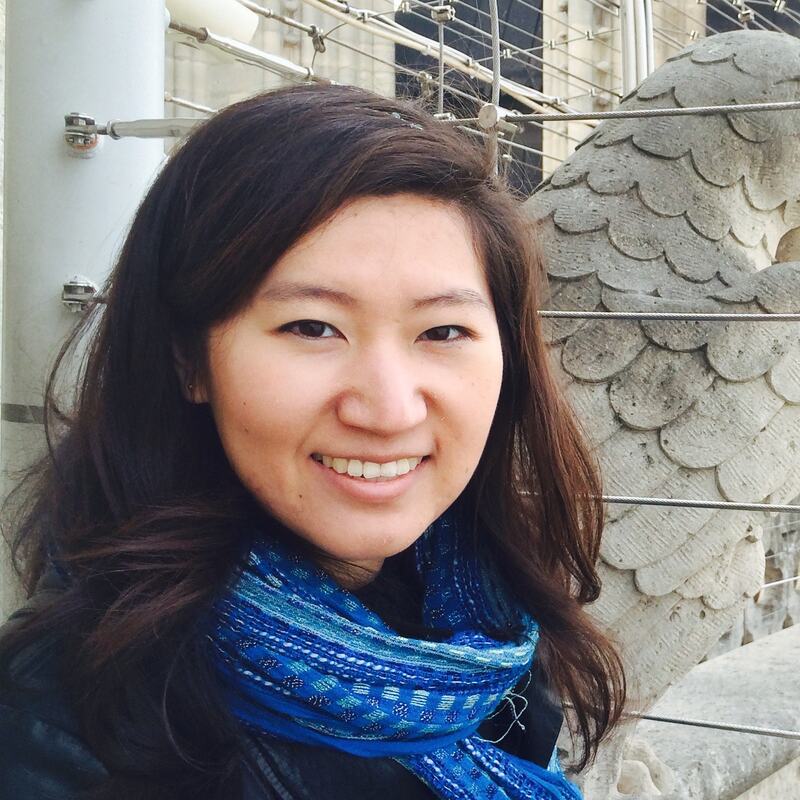Gender & Intersectionality in Asian American History
Immigrant Women Do It All: Influence of Picture Brides
GRADE LEVEL: 7 - 12
SUGGESTED RUN TIME: 50 minutes (1 class period)
SUGGESTED RUN TIME: 50 minutes (1 class period)
Common Core Standards
Grades 6-8:
CCSS.ELA-LITERACY.RH.6-8.1: Cite specific textual evidence to support analysis of primary and secondary sources.
CCSS.ELA-LITERACY.RH.6-8.2: Determine the central ideas or information of a primary or secondary source; provide an accurate summary of the source distinct from prior knowledge or opinions.
CCSS.ELA-LITERACY.RH.6-8.7: Integrate visual information (e.g., in charts, graphs, photographs, videos, or maps) with other information in print and digital texts.
For more information, please visit www.thecorestandards.org.
CCSS.ELA-LITERACY.RH.6-8.1: Cite specific textual evidence to support analysis of primary and secondary sources.
CCSS.ELA-LITERACY.RH.6-8.2: Determine the central ideas or information of a primary or secondary source; provide an accurate summary of the source distinct from prior knowledge or opinions.
CCSS.ELA-LITERACY.RH.6-8.7: Integrate visual information (e.g., in charts, graphs, photographs, videos, or maps) with other information in print and digital texts.
For more information, please visit www.thecorestandards.org.
NEW JERSEY STANDARDS
English Language Arts Grade 7:
NJSLSA.R7. Integrate and evaluate content presented in diverse media and formats, including visually and quantitatively, as well as in words.
NJSLSA.SL1. Prepare for and participate effectively in a range of conversations and collaborations with diverse partners, building on others’ ideas and expressing their own clearly and persuasively.
NJSLSA.SL2. Integrate and evaluate information presented in diverse media and formats, including visually, quantitatively, and orally.
Social Studies Grades 6-12:
6.1.12.HistoryCA.2.a: Research multiple perspectives to explain the struggle to create an American identity.
6.1.12.HistoryCC.3.a: Evaluate the role of religion, music, literature, and media in shaping contemporary American culture over different time periods.
6.1.12.CivicsDP.5.a: Analyze the effectiveness of governmental policies and of actions by groups and individuals to address discrimination against new immigrants, Native Americans, and African Americans.
6.1.12.HistoryUP.5.a: Using primary sources, relate varying immigrants’ experiences to gender, race, ethnicity, or occupation.
6.1.12.CivicsHR.8.a: Analyze primary and secondary sources to explain how social intolerance, xenophobia, and fear of anarchism led to restrictive immigration and refugee laws, and the violation of the human rights of individuals and groups.
NJSLSA.R7. Integrate and evaluate content presented in diverse media and formats, including visually and quantitatively, as well as in words.
NJSLSA.SL1. Prepare for and participate effectively in a range of conversations and collaborations with diverse partners, building on others’ ideas and expressing their own clearly and persuasively.
NJSLSA.SL2. Integrate and evaluate information presented in diverse media and formats, including visually, quantitatively, and orally.
Social Studies Grades 6-12:
6.1.12.HistoryCA.2.a: Research multiple perspectives to explain the struggle to create an American identity.
6.1.12.HistoryCC.3.a: Evaluate the role of religion, music, literature, and media in shaping contemporary American culture over different time periods.
6.1.12.CivicsDP.5.a: Analyze the effectiveness of governmental policies and of actions by groups and individuals to address discrimination against new immigrants, Native Americans, and African Americans.
6.1.12.HistoryUP.5.a: Using primary sources, relate varying immigrants’ experiences to gender, race, ethnicity, or occupation.
6.1.12.CivicsHR.8.a: Analyze primary and secondary sources to explain how social intolerance, xenophobia, and fear of anarchism led to restrictive immigration and refugee laws, and the violation of the human rights of individuals and groups.
|
Students Will Be Able To...
|
Lesson Plan Agenda
SLIDES 2-6 5 MINUTES Bellringer |
Slide 2: There are two options for bellringer. Delete slides unrelated to the one you choose to use.
Slide 3: Note that the trailer is mostly in Korean with English subtitles. Approximately 2 minutes long. Slide 4: Have students discuss in small groups or pairs. Slide 5: Before playing video, explain to students that this clip shows one of the ways in which Asian American families were formed in the early 1900s, through the exchange of photos across the world. These photos were often the only way these people “met” their husband or wife before getting married. While they watch the video, ask students to reflect on what they see in the photos, and how they might feel to only get a photograph of someone before committing to marriage. Play first 2-3 minutes of the clip. Slide 6: Have students discuss in small groups or pairs |
SLIDES 6-8 5-8 MINUTES Vocabulary |
Slide 7: Give students time to discuss questions below before going to next slide with our definitions. Students can also come up with their own definitions. Gender roles: Have students think of examples generally, then specifically for Asian Americans. Are these roles fixed? Identity: Have students think about how they define their own identity. What and who plays a role in shaping a person’s identity? Stereotypes: What are some stereotypes students have heard? Are stereotypes true? Where do they come from? Slide 8: Hopefully students are thinking about how gender roles and stereotypes influence identity internally and externally by this point. If not, guide students in that direction as this will be key to the lesson. |
SLIDES 9-18 15-20 MINUTES Case Study |
Slide 10: Note that this was generally a two-way street, and the intermediary and/or bride would also get to see the groom’s photo prior to agreeing to move to the U.S. (often Hawaii or California). Students can share with whole class or with partner why they think picture brides might choose this path. What do students think picture brides hoped for in their new lives in the U.S? Slide 11: The cultural tradition of picture brides existed prior to the US-based tradition. In Korea and Japan, this was a common practice among families of higher socio-economic classes, so it was something familiar to the participants. For many of the men, this practice became necessary to find partners as the immigration of Asian women to the U.S. was limited, and interracial marriage was illegal or highly taboo. Slide 12: To stay in the U.S., picture brides had to get married immediately, often right at the immigration station even if the groom’s photo did not match. The main reason that many picture grooms wanted a bride was to start a family, and so brides were expected to have children and start a family A.S.A.P. This expectation often conflicted with the financial responsibility that these new wives often had to bear because husbands were in debt, could not make enough for the whole family, etc. Oftentimes, mothers would carry or take their children into the plantations or other workplaces to labor. Although the above three aspects of their new lives might be seen as negative or less than ideal, the second and third aspects gave these women opportunities for freedom and leadership in the community, roles which they embraced and flourished in. For many Korean wives, they became active leaders in the Korean independence movement in the U.S. This was an opportunity for them to gather socially as a community but also to support their cultural identities and families back home. Beyond the independence movement, both Japanese and Korean picture brides were active leaders in ensuring that their children and children’s children retained a sense of their respective cultural identity while growing up in the U.S. Ask students to think about these realities that many picture brides faced and compare them to the thoughts they had about what picture brides might have hoped for on the previous slide. Students can also discuss if they think the positive shifts like community leadership, activism, financial contributors, etc. were worth the hardships that picture brides endured? Slides 13-15: These quotes from picture brides or their family members provide additional context and texture to the historical summary from the previous slides. Read through the quotes as a class and ask students to note what stands out to them or surprises them. Slide 16-17: Transition by explaining that the film Minari shows more contemporary gender dynamics in the Korean immigrant community, while still revealing the persistent influence of the history of picture brides. This clip shows the first 5 minutes of the film. If time is limited, start from the 1:00 mark. If you did not watch the film’s trailer for the bellringer, watch this. If you chose the picture bride bellringer, watch the trailer instead of this intro clip. Watch next clip (45 seconds). Slide 18: Have students answer one or more of these questions in pairs or aloud as a class. |
SLIDES 19-24 10-15 MINUTES Deeper Dive |
Slide 17: There are two options for deeper dive. Delete slides unrelated to the one you choose to use. Each activity has its own reflection questions.
Slide 20: For compare and contrast, teachers offer students the option to compare and contrast gender roles with picture brides, Minari and their own lives. Teachers can let students do one of the following:
Slide 21: Reflection in pairs or individually. Slides 22-23: “More than a picture activity.” Students can circulate around the room or in small groups as they “introduce” themselves to their classmates. Slide 24: Students discuss in pairs or small groups. |
Additional Resources
MINARI, full film
Picture Bride by Yoshiko Uchida
Collection of video clip interviews from Discover Nikkei
“Women's History in Public: "Picture Brides" of Hawaii” by Alice Yun Chai
Picture Bride by Yoshiko Uchida
Collection of video clip interviews from Discover Nikkei
- http://www.discovernikkei.org/en/interviews/clips/381/
- http://www.discovernikkei.org/en/interviews/clips/1681/
- http://www.discovernikkei.org/en/interviews/clips/260/
“Women's History in Public: "Picture Brides" of Hawaii” by Alice Yun Chai





